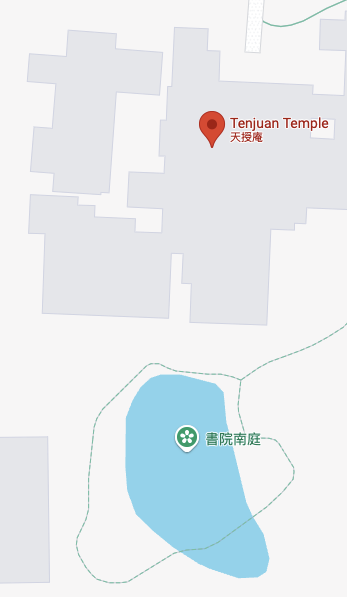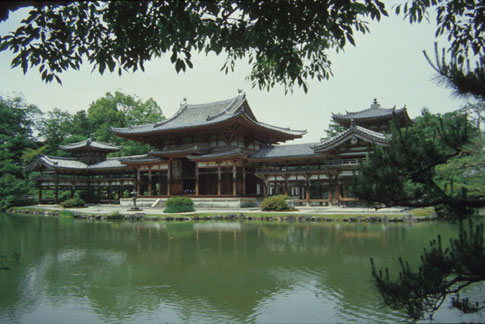

Tenju-an is one of the many subtemples of Nanzen-ji. It was founded in 1336 by Kokanshiren, chief priest of Nanzen-ji, in commemoration of the founding of Nanzen-ji in the previous century. Tenjuan's two gardens date back to the founding of the temple, although parts were added or altered in the Edo and Meiji Periods. The more famous of the two is the dry garden located to the east of the main hall, but the pond and stroll garden to the south of the main buildings is also worth visiting. Choose a view point from the map or click Tour the Garden for more views of this garden.
Tenju-an is one of the many subtemples of Nanzen-ji. It was founded in 1336 by Kokanshiren, chief priest of Nanzen-ji, in commemoration of the founding of Nanzen-ji in the previous century. Like many of Kyoto's early temples, Tenju-an was destroyed by fire during the Onin Wars of 1466-67 and was not rebuilt until 1602. Tenju-an's two gardens date back to the founding of the temple, although parts were added or altered in the Edo and Meiji Periods. The more famous of the two is the dry garden located to the east of the main hall, an elongated rectangle of white gravel set against a backdrop of trees, shrubs, moss and rocks. Its most notable feature is a stone walk that emerges from the eastern veranda of the hall and turns to the north, leading to what was once the main gate (the modern entrance is now on the axis of the study hall). Its design--a combination of sand, moss, and square stones set corner to corner--is echoed by a second path constructed in 1610 and leading to the mausoleum of Hosokawa Yusai, a daimyo who underwrote the rebuilding of the temple in 1602.
The southern garden, located to the south of the two main buildings, is a stroll and pond garden. A long peninsula essentially divides the pond into two bodies of water, the smaller eastern one located on the axis of the main hall, the western one aligned with the study hall. One of the most interesting elements of the eastern pond is a staggered plank bridge set against a stand of blue iris planted along the northern shore. This combination of iris and a rustic wooden bridge, its planks either staggered or set at right angles to each other, is a device found in many works of Japanese art, including painted screens, ceramics, and lacquer work. It is a reference to one of the most famous moments in the history of Japanese poetry, an episode described in the tenth-century Tale of Ise (Ise monogatari). The famous ninth-century courtier and poet Ariwara no Narihira was traveling in Mikawa province when he and his companions came upon a stand of iris growing beside a plank bridge. Struck by the beauty of the scene, they paused to compose a linked verse, each line of which begins with a syllable from the Japanese word for iris (kakitsubata). It's safe to say that anyone familiar with the story would instantly recognize the allusion when it occurs in a work of art, including the garden of Tenju-an. The Ise monogatari actually refers to eight bridges, but most artists and landscape architects reduce that number.
